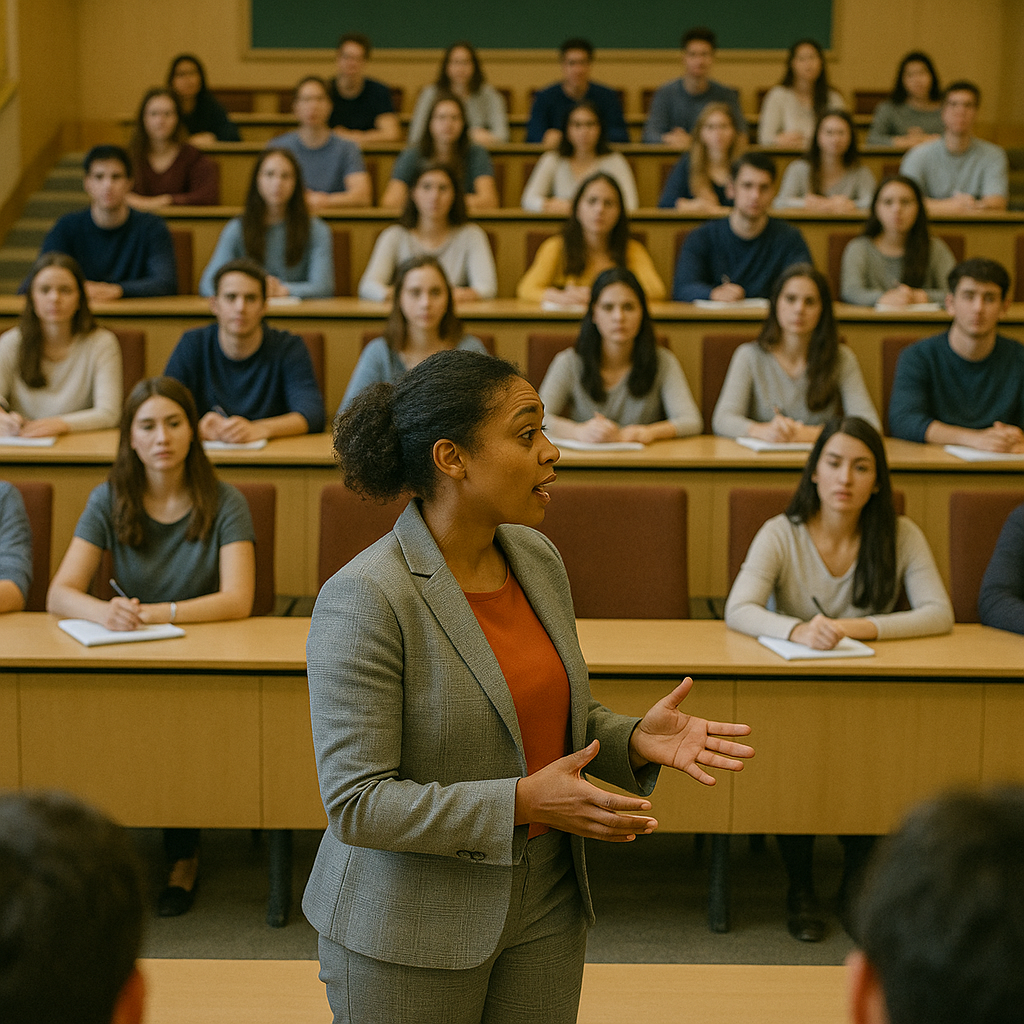Lecturing
Lecturing has long been a central mode of instruction in higher education, but it’s also become a battleground for debates about effectiveness. In faculty workshops and pedagogical guides, we often hear “rules of thumb” that sound reasonable—but when we dig deeper, these bits of advice can mislead as much as they inform.
Here are three commonly shared ideas about lecturing, why they may not be quite right (or complete), and some ideas about what we should do instead to increase student learning.
Idea 1: “The Better the Lecturer, the Better the Learning”
The Conventional Wisdom: If you're a great performer—witty, eloquent, engaging—students will learn more. Charisma equals comprehension.
What It Misses: Research and anecdotal evidence suggest that attention, however desirable, isn’t the same as learning. A riveting lecture can captivate students without helping them retain or apply new knowledge. In fact, fluent and entertaining lectures may leave students susceptible to the illusion of explanatory depth, causing them to overestimate how well they grasp a concept (because they're able to follow along with the lecture) until they’re asked to explain it themselves, in their own words—and realize they can’t.
What to Do
- Design lectures as guided problem walkthroughs, not performances.
- Include deliberate pauses for students to paraphrase and apply new ideas.
- Use frequent check-ins, think-pair-share, or peer instruction.
- Invite students to teach or fact-check explanations collaboratively.
Myth 2: “Flipped Classrooms and Active Learning Make Everything Better”
 The Conventional Wisdom: According to an ever-growing bibliography of studies, lecturing (in the conventional, one-way sense) is tantamount to educational malpractice. At the very least, its an inefficient use of faculty time and expertise. Instead, instructors should "flip" their classrooms (e.g. by asking students to view instructional videos on their own time) and embrace active learning inside the classroom.
The Conventional Wisdom: According to an ever-growing bibliography of studies, lecturing (in the conventional, one-way sense) is tantamount to educational malpractice. At the very least, its an inefficient use of faculty time and expertise. Instead, instructors should "flip" their classrooms (e.g. by asking students to view instructional videos on their own time) and embrace active learning inside the classroom.
What it misses: Active learning is powerful, and does appear to be one of our most powerful tools for closing achievement gaps among students with different levels of prior knowledge. But it’s not a cure-all—for one thing, students often don’t feel like they’re learning when they're in an active learning classroom (especially if the instructor has not explained the rationale behind it); for another, active learning that is not deliberately structured is no better at helping students learn than even the most passive lecture.
The most effective users of active learning are those who explain clearly its purpose, and who use it as part of a larger "cycle" of learning to prod students to pay attention to instruction and then practice and consolidate what they've been taught. In other words, you may want to structure your class period as follows:
- Students engage in problem solving "prematurely" (i.e. before they know everything they need to know to solve the problem); then
- Instructor steps in to provide the missing information and model the new techniques required to solve the problem; then
- Students return to the problem, implementing / practicing / consolidating what they've just learned from the instructor; then
- Students are prompted to engage in reflection about what they have learned.
What To Do
- Design with intentional struggle: let students wrestle with problems in manageable chunks.
- Use lectures to directly support problem-solving, not to overload with facts.
- Prioritize diagnosing misconceptions and confronting them head-on.
- Don’t just “be interactive”—be purposeful about how each activity supports learning.
Myth 3: “Technology Is the Enemy of Attention”
The Conventional Wisdom: Devices and screens are distractions. Instructors should banish them from the classroom to regain control of student attention and learning.
What it Misses: Technology can certainly distract—but it can also be a powerful tool if it’s integrated meaningfully. For example:
- Generative AI tools can be used to generate discussion prompts, facilitate live polling, or even help with real-time group formation for the purposes of active learning.
- Tech distractions often signal boredom or disengagement—problems with the lecture, not the device.
What To Do
- Use tech to invite interaction: short polls, crowd-sourced questions, even structured debates.
- Give students tech tasks with cognitive purpose, like evaluating AI-generated answers or collaborating in real time.